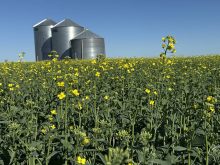U.S. hog prices rally
United States hog prices rebounded last week as markets began to recover from the shock of the recent U.S. Department of Agriculture hog and pig report.
Iowa-Southern Minnesota hog prices (51-52 percent lean, plant top, live equivalent) dipped early last week but recovered to a range of $25.50-$35.25 (U.S.) per hundredweight, mean $32.63, by July 9. There were fewer hogs marketed in some areas, which encouraged packers to pay more.
Following a period of losses, U.S. packers now appear to be in the black even though they had to lower wholesale pork prices to increase retail pork purchasing.
Read Also

Huge Black Sea flax crop to provide stiff competition
Russia and Kazakhstan harvested huge flax crops and will be providing stiff competition in China and the EU.
The huge stocks of pork in cold storage in the U.S. will have to be reduced significantly, plus hog market weights have to drop and herd liquidation has to take place before producers can expect a sustained hog price rally.
In Manitoba, estimated average Index 100 hog prices declined to about $114 per hundred kilograms this week, well below the break-even level.
Canadian cattle hurting
Fed cattle sales were light last week and prices slipped after the anti-dumping announcement by the U.S.
Prices in Alberta July 8 were steers $82.60-$84.30 per cwt., flat rail $139.65-$139.95 with no heifer trade reported. Packers report beef movement is good in spite of hot weather in eastern parts of the country. Most Alberta plants were expecting to kill Saturday, indicating good margins and movement.
The Montreal wholesale price lost $2 to settle at $149 per cwt.
Calgary wholesales were called $1 to $2 lower in a range of $141-$149 on handyweight steers. Byproduct values were unchanged.
Canfax said feedlots entered July in good shape for numbers and currentness.
Light fed cattle supplies and resumption of slaughter at Pasco, Washington, should help to support near term prices. There remains a risk of prices $1- $2 per cwt. lower over the next several weeks if packers build inventory.
The spot basis between the U.S. and Canada is expected to be volatile due to the anti-dumping duty.
Cow prices were steady last week. Cows made up the largest volumes in the sale rings although still seasonally light. Most D1,2 cows ranged from $54-$62 per cwt., with sales to $64. The outlook is steady.
Feeder cattle sales were mostly steady on light volumes, Canfax said.
About 90 percent of sale quotes were cows and bulls. Volumes were just under 8,000 head, which was almost half of the previous week’s volume.
Average prices were $6-$9 per cwt. higher on heavier feeders compared to last year and $10-$15 higher on lighter feeders. Canfax said prices should remain relatively strong on light numbers as buyers look for quality types to fill orders.
Stock cow trade showed bred cows ranging from $600-$1,130 on few sales. Bred heifers were unquoted. Cow-calf pairs sold from $700-$1,450.
















